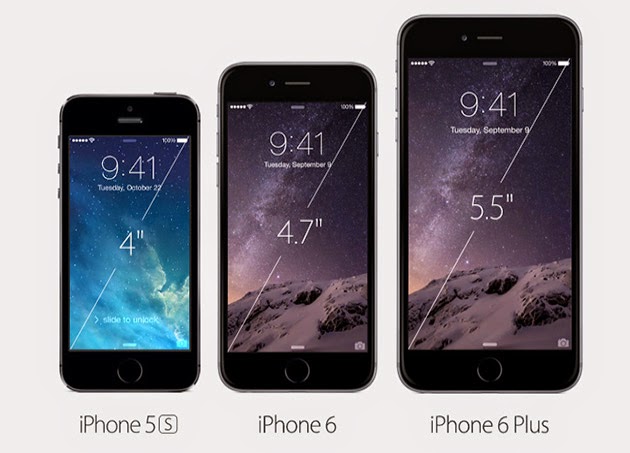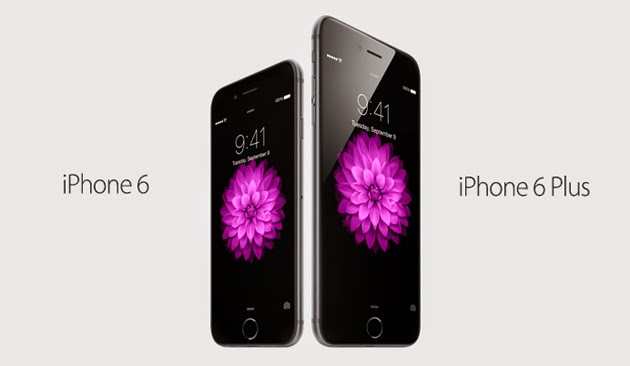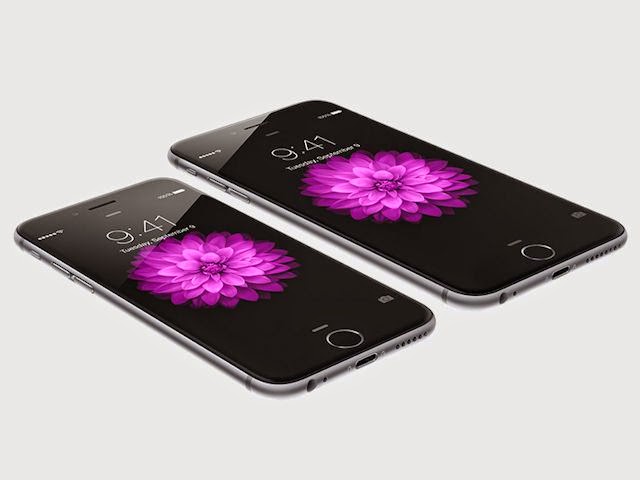It’s been a great time to be in love with Android over the past couple of weeks, and now it’s time for people in the other camp to enjoy their big moment.
Apple just introduced its new iPhones at an event in Cupertino, and this is no small upgrade: the biggest news is probably the larger screens that bring the iPhone 6 and iPhone 6 Plus kicking and screaming into the modern era. At 4.7 inches, the iPhone 6 is by no means a large device, but for exclusive Apple users, the change will be massive. And the new iPhone 6 Plus is big even for Android standards. But there’s more than meets the eye, and, as technology fans, we’re interested to see all the new features that Apple is bringing to the table. Here it goes.
Table of Contents
iPhone 6 specifications
The two new iPhones are a general upgrade over their predecessors, though Apple is clearly holding on to its policy of delivering specifications that get the job done, without competing on paper with Android or Windows Phone counterparts.
At a resolution of 1334 x 750, the iPhone 6’s screen offers a pixel density of 326 ppi, which is not groundbreaking by Android flagship standards, but is not awful either. The iPhone 6 Plus comes with a 5.5-inch 1920 x 1080 display, with an effective ppi rate of 401. In short, Apple fans were perfectly happy with the Retina display of the iPhone 5s (which was less dense than most high-end Android phones), so the iPhone 6 will probably do just fine in this area.
The processing package is a 64-bit chip A8 manufactured by TSMC and Samsung on the 20nm process, which in practical terms, means that performance and battery consumption should both be improved. This is a dual-core design and it’s coupled with an Imagination Series6 GPU and 1GB of RAM. Again, the raw specs would belong to a mid-range Android phone, but Apple has always known how to get the best of its hardware through clever low-level optimization.
According to past reports, the battery on the iPhone 6 is slightly larger than on the iPhone 5s, at 1,810 mAh. For both it and the iPhone 6 Plus, Apple is promising battery life that is as good or better than 5s.
The camera on the new iPhone 6 is a 8MP model with 1.5 micron pixels, f 2.2 aperture, and an “all-new sensor” and better software. The iPhone 6 Plus is coming with optical image stabilization, while the iPhone 6 will only have digital stabilization. OIS will bring clearer shots and steadier videos, and it’s a welcome addition to a camera that users have long appreciated.
Apple has preserved its signature home button with an integrated fingerprint scanner, and made a big addition in NFC, which will be used in a proprietary payment system called Apple Pay that Apple is setting up together with Visa, Mastercard, and other big names in the industry. NFC is basically a standard feature even on entry-level Android phones, and it’s interesting to see Apple jump on the bandwagon this late. However, Apple adopting this technology could be the spark that ignites the long-predicted revolution of mobile payments in the US and beyond, and that’s great for users of all platforms.
iPhone 6 design
In terms of design, the rumors were pretty much spot on – Apple adopted a generally rounder shape for the new iPhone, that resembles the design of the latest gen iPod and tablets. Gone are the flat sides and chamfered edges – the sides of the phone are now rounded, and the glass protecting the screen features a curvature at its edges, like on the Note 4 and new Moto X.
The new iPhones come in the traditional black, white, grey, and gold color schemes and are pretty thin, at around 7 millimeters. The power button is on the side.
There was lots of talk about Apple replacing Gorilla Glass with sapphire for the new iPhone. Apple reportedly commissioned the entire manufacturing capability of a partner and bought sapphire manufacturing equipment worth tens of millions of dollars. However, as it turns out, this is just “ion-strengthened” glass, which sounds fancy, until you consider that all Gorilla Glass is ion-strengthened.
iPhone 6 software
Apple already demoed most of the software features of the OS on iPhone 6 and iPhone 6 Plus during its WWDC conference in early summer. There are lots of highlights, though many of them aren’t exactly new for us Android users. Think widgets in the notifications drawer, a better keyboard, new fitness and health features, better ways for apps to communicate with each other, and probably the most interesting, Continuity, which enables seamless connectivity between the iPhone and other Apple products.
The iPhone 6 Plus’ software is slightly different than the 4.7-inch model’s, in order to make use of the larger screen size. There’s a one-handed mode, and you can slide down the entire interface to reach the notification shader easier.
More about iOS 8 here.
iPhone 6 price and release date
Apple hasn’t changed much the iPhone’s pricing model. The main 4.7-inch model starts from $199 on contract (16GB), while the 5.5-inch design goes from $299. Apple is keeping the now old iPhone 5s and 5c as entry-level options for users that want a free or cheap phone on contract.
The devices will go on sale from September 19, with pre-orders from September 12.
Wrap up
The new iPhones seem like a solid upgrade for Apple users, though there really isn’t anything totally new and compelling on these devices that could prompt Android users to migrate en masse to Apple. But the larger screens alone may be enough to retain users that have been tempted to switch to Android, and also to get back some of the users who have opted for the superior experience of large Android phones.
With a big update on the software side, a better screen, a better camera, and – probably – the same great performance, the new iPhones are solid competitors to the top Android devices we know and love. With strong competition comes more effort being put in the experience and quality of Android devices, so ultimately, this good iPhone upgrade is good news for everybody. And, looking at the grand scheme of things, it’s somehow reassuring to see Android’s main competitor put up a good fight, at a time when Google’s operating system holds a grip on over 80 percent of the global market.
Sound off
Are you impressed with the new iPhones? Do they change the game, and if so, in what way? Are you in any way tempted with Apple’s larger devices? Tell us in the comments.















